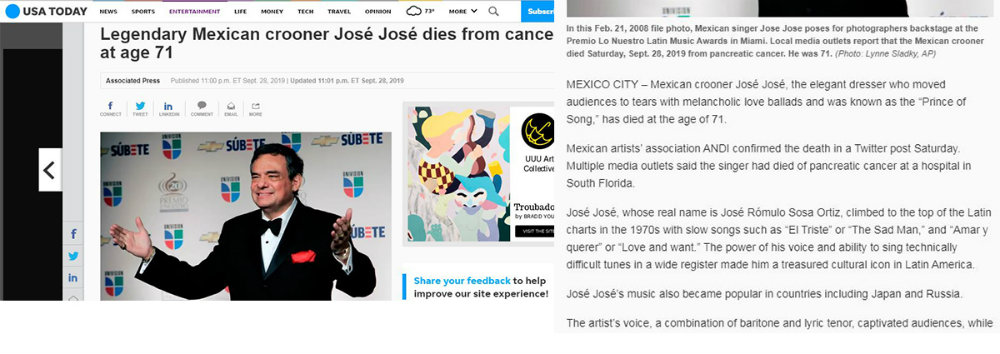01 Nov

One of the best ways for self-expression is through written communication. It is a powerful medium as it educates, informs, and entertains. Writing takes many forms but for news articles, there are rules you need to consider to relay information effectively. If you’re interested in making a career in journalism or just writing for a school paper, brush up on these tips on how to write a news article. This article will help guide you convey all the relevant information to efficiently get through your target audience.
Do Your Research
Thorough research is the key to writing an effective news article. Get facts, observations, and quotes that you should be using in your news article. Be ready to give out first-hand information that’s relevant and truthful.
Think about what your audience wants to know and to do this, you need to understand them. Write about what interests them and not about what interests you. Determining who you’re writing for will tell you what to write and how to do it properly.
Interview Your Sources
Always seek out reliable sources for your news article and never hesitate to contact them. A robbery at a local store requires you to interview the store owner, not the bystanders unless they’re first-hand witnesses. If you’re reporting about an argument, get the stories of both sides for fairness.
Jot down their responses to be as accurate as you can be in your quotes and inform them that you’ll be quoting them. If you can, have the interview recorded for documentation and veracity.
Plan Your Article

Before starting to construct your piece, create a plan. Compile all your facts and structure them in an organized manner. Make an outline similar to an inverted triangle, writing about the most important first going down to the least. This news feature from South China Morning Post is a good example.
Give your readers the newest, the most crucial, the most interesting piece of information first. This will engage them easily and provide a summary of your story.
How To Write A News Article
Now that you created an outline and all your facts are ready to be written, let’s take the news article apart for you to know what to write first.
The Headline

Your headline is a crucial part of your news article. Too long and it can bore your readers, too short and it can’t have enough substance to get their attention. Writing an effective headline can be tricky so here are some tips.
Go straight to the point. Fragmented grammar can and should be used to avoid lessening the impact of the story. You should include relevant facts and convey what the article is all about in a few words.
This example from The Washington Post is catchy yet precise. It is engaging and relevant to the times. You may also want to write your headline the last so that you have a firm grasp of the story for you to think of the best headline possible.
The Lead

The New Yorker writer John McPhee says, “I’ve often heard writers say that if you have written your lead you have 90 percent of the story.” Searching for the lead, he says, is a struggle. Much like the headline, only in paragraph form, the lead should engage the readers instantly and give your story a summary.
This example from The Wall Street Journal sums it up well. The majority of readers just scan the first paragraph and continue only if they find it interesting, otherwise, they move on to the next story.
The Story
Once you’ve written the lead, follow it up with the rest of the story with details and all the additional information. Create a hierarchy of information, provide details and explanations, and then add the quotes where suitable. Round up the article with information that can help you transition to new points and make the reader go through until the end.
You can relay your information on a certain emotional level to be more engaging. Give them all that they need to know to encourage them to form their own opinion, never pushing for yours. Your news article shouldn’t be biased in any way for it to become objective.
The Four “Ws”

Ensure that your article answers the readers’ four Ws—the whats, wheres, whys, and whos. Answer all the questions your readers may have. Add details in chronological order to make it easier for them to digest it.
Although the hows and the whys can wait until the later paragraphs, you still shouldn’t forget about them. Always write using the active voice as it denotes speed and directness. This news article from USA Today shows this quite well.
The Details

Provide all the details on all the information that you included in your lead paragraph. This is the part where you go into details that you purposely left behind when starting with the article. Present your information in a brief manner to give the readers what they’re expecting to know.
Chicago Tribune reports about apples stolen from an Indiana orchard in this news article that is replete with details.
Quotations

To gain credibility in your news article, add your sources of information. Use the quotes you gathered when doing your interview and research. This will validate the news article and will add value to you and your organization.
Put your quotes and sources as you go along and not at the end as you would for an academic paper. This will put emphasis on your story and be worthy of your readers’ trust. This article from the Los Angeles Times quotes the 60 Minutes interview of the Saudi Crown Prince Mohammed bin Salman regarding the journalist Jamal Khashoggi.
Proofing
Even if you read your news article over and over again, you still need to have it proofed by an editor. This way, the article can be read from a new perspective and find errors that you may have missed. Once you know how to write a news article, you need to understand that proofing is as important as all these tips.









